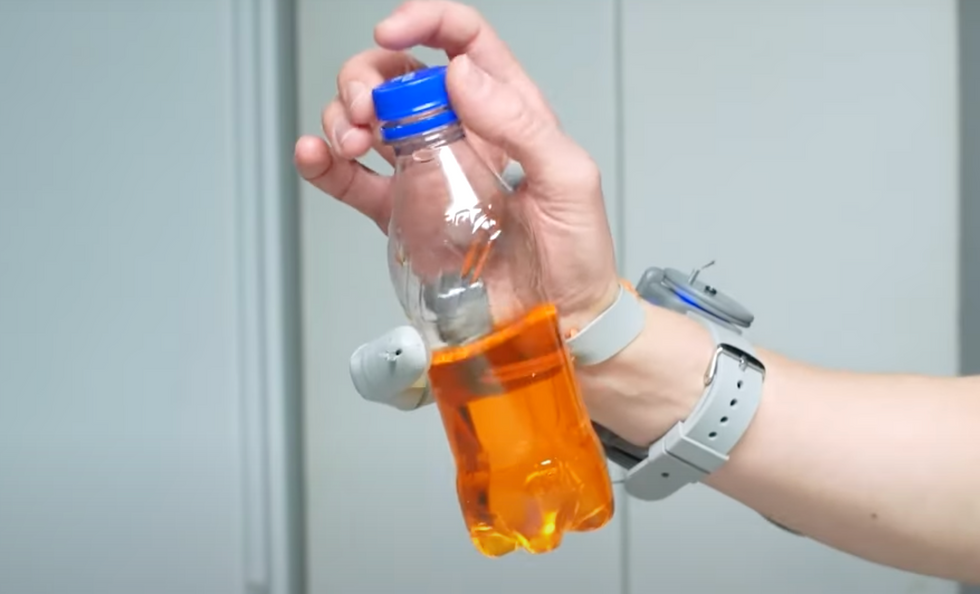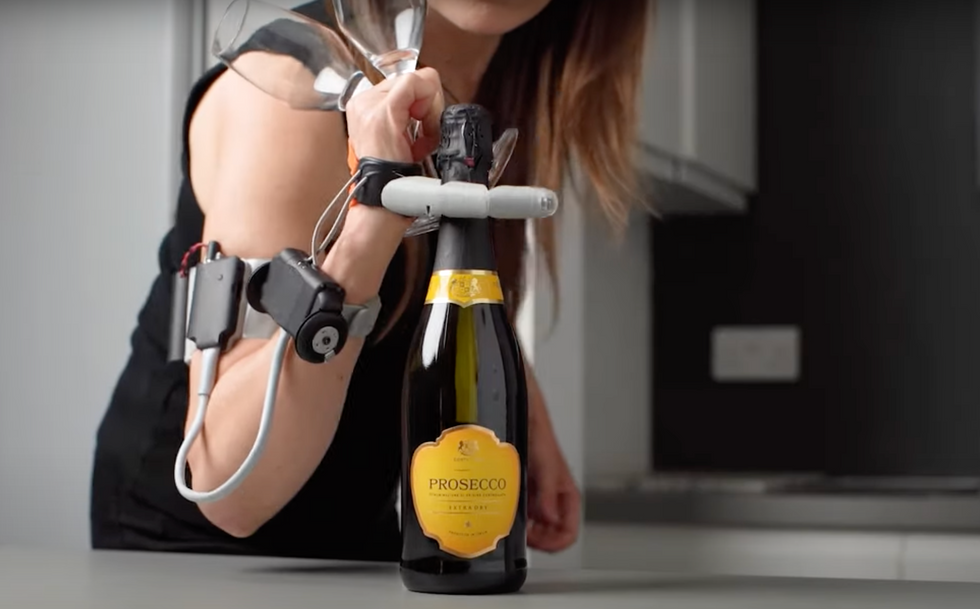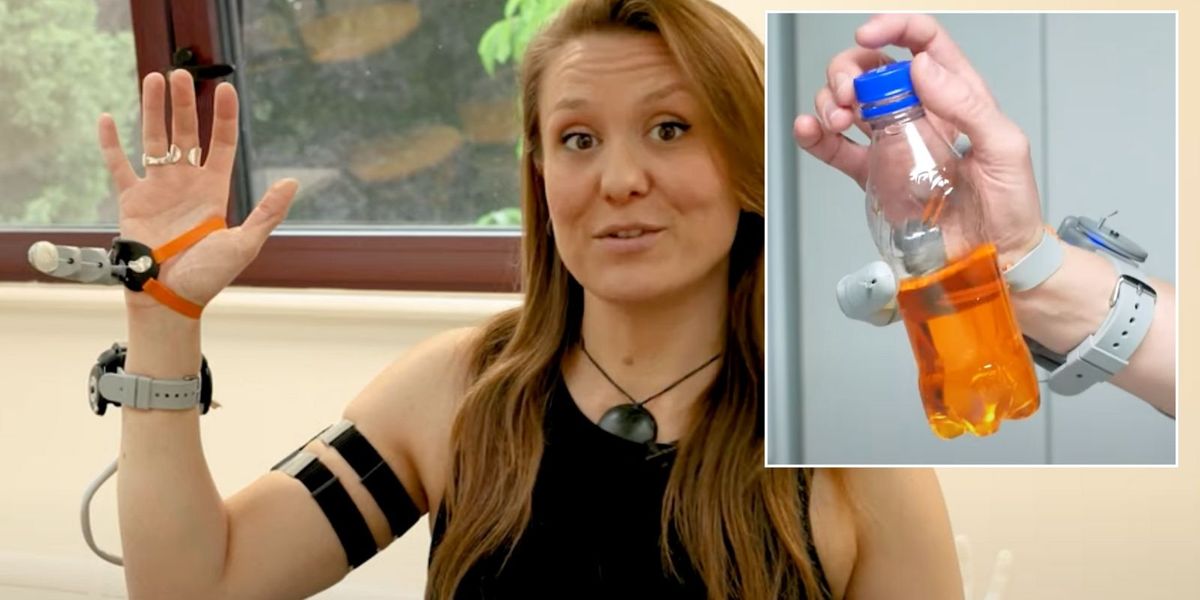A prosthetic thumb which could be used to help pick up and manipulate objects is being trialled by members of the public.
Dubbed “the third thumb”, the new invention could allow people to open a bottle single-handedly, hold an egg while cracking another egg into a bowl and peel a banana with one hand.
The thumb was invented by designer Dani Clode while at the Royal College of Art.
Now, the robotic thumb is being put through its paces by Cambridge University as researchers trial the thumb with “everyday scenarios”.
The mechanism is attached to the opposite side of the palm to the person’s real thumb and is controlled by a pressure sensor under their feet.
A press of the right foot pulls the robotic thumb across the hand while pressure applied by the left foot moves it up towards the fingers.
“The third thumb is often most useful in your everyday life when you are holding multiple items whilst trying to perform a task, and you think ‘I just need an extra pair of hands’,” Professor Tamar Makin, of the Medical Research Council (MRC) Cognition and Brain Sciences Unit at Cambridge told The Telegraph.
“For example, if you’re trying to hold the lead of your dog, whilst you’re also holding a coffee cup and your phone, and at the same time you’re trying to get your keys out of your pocket.
LATEST DEVELOPMENTS:

The robotic thumb is being put through its paces by Cambridge University as researchers trial the thumb with ‘everyday scenarios’
Cambridge University
“It’s these types of everyday scenarios, where having the third thumb available to help hold one of these items would be a big help.”
A new trial made up of 596 members of the public saw people testing the robotic thumb by either moving pegs into a basket or manipulating foam objects.
According to researchers, 98 per cent of participants were able to manipulate objects using the thumb within the first minute of use.
The results of the trial have been published in the journal Science Robotics.

The mechanism is attached to the opposite side of the palm to the person’s real thumb and is controlled by a pressure sensor under their feet
Cambridge University
Lucy Dowdall, of the MRC Cognition and Brain Science Unit, said: “The current study was geared towards demonstrating the feasibility of our technology – we showed that pretty much anyone who wants to use the thumb can, and can figure out how to use it very quickly.
“This level of evidence goes a long way towards commercialisation, but we are not quite there yet. We are currently in the R&D phase with a working prototype that has been extensively tested.
“Our focus remains on refining the technology and ensuring it meets the highest standards of functionality, safety, and user adaptability, as well as using it as a model to explore augmentation in the neuroscience research space.”

